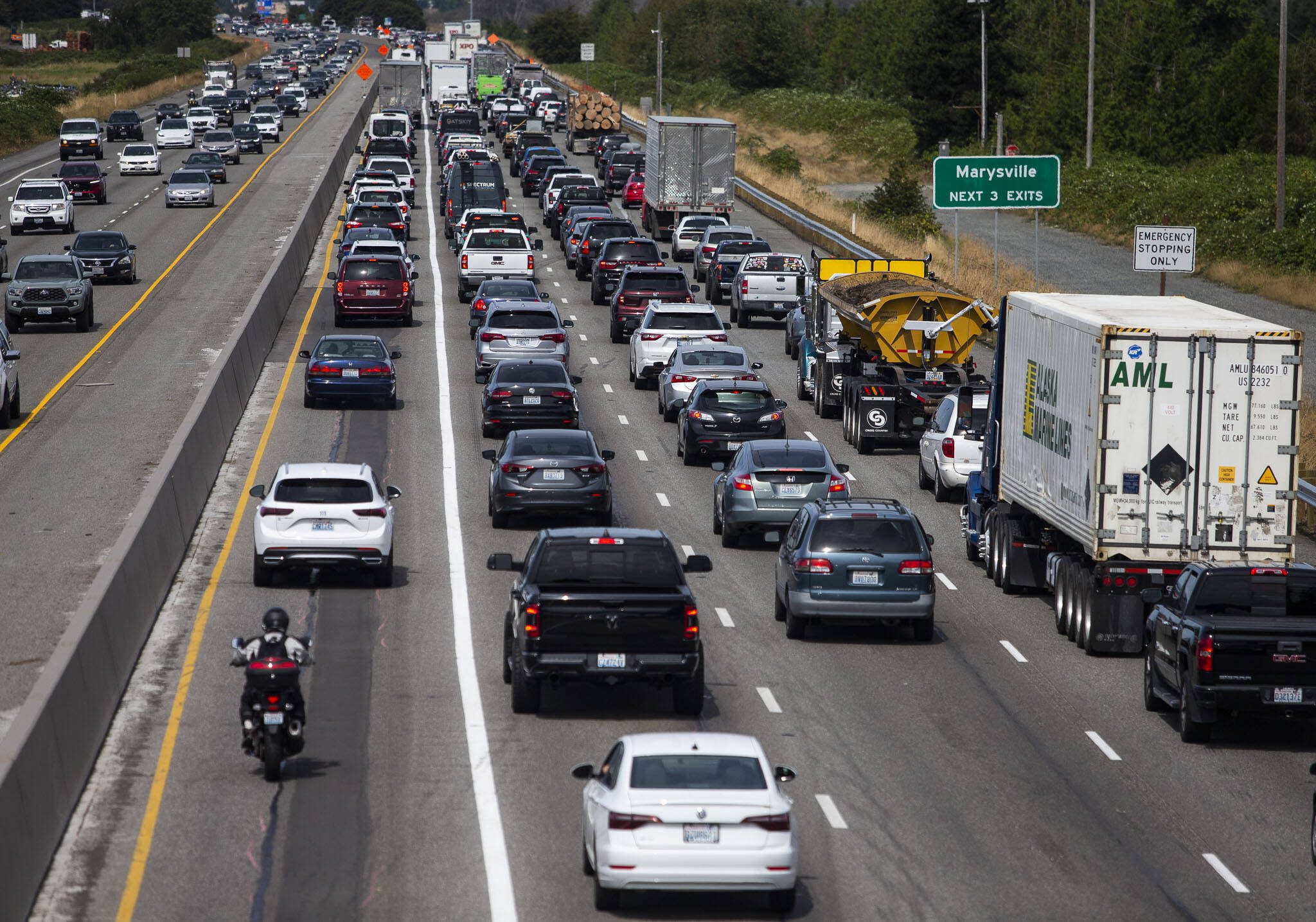EVERETT — Representatives from Washington state’s Department of Ecology and Washington Physicians for Social Responsibility testified on Tuesday during the first day of the U.S. Environmental Protection Agency’s public hearing sessions over the Trump Administration’s proposal to rescind greenhouse gas regulations for vehicles.
Online hearings, which are open to the public with registration, will go through Aug. 22, and written public comments can be sent through Sept. 22.
On July 29, the Environmental Protection Agency proposed to rescind its 2009 Greenhouse Gas Endangerment Finding, which concluded six greenhouse gases, including carbon dioxide and methane, threaten current and future public health and safety.
The finding, supported by a large body of scientific studies, granted the Environmental Protection Agency the ability to federally regulate emissions from vehicles and engines through the Clean Air Act and outlined a clear connection between greenhouse gas emissions and climate change.
“For the sake of my patients and my own kids, we need the EPA to regulate emissions from engines and vehicles to ensure the safety and health of our communities, including those most vulnerable among us, children,” said attending anesthesiologist at Seattle Children’s Hospital and member of Washington Physicians for Social Responsibility Dr. Elizabeth Hansen. “Climate change and extreme heat made worse by increasing carbon emissions directly harm children. We have the studies to prove it, and many have testified about those, but we can all see it with our own eyes.”
July temperatures were above average across the state, and it was the fourth consecutive month with below-average precipitation, data collected from the University of Washington showed. July was also the 22nd driest month and the 12th hottest since 1985.
“This year, we declared drought again for the sixth time in 10 years,” said Climate Pollution Reduction Program Manager at Washington’s Department of Ecology Dr. Joel Creswell. “In a state known for having abundant water, we’re now facing crippling water supply issues.”
During his testimony, Creswell noted Washington is one of 15 states, plus the District of Columbia, that have adopted more stringent measures for curbing greenhouse gas emissions from California.
Historically, California has been able to create its own stricter emission standards compared to federal standards with the approval of the Environmental Protection Agency, which gave the state waivers for each approved policy. States then have the option of adopting California’s standards, which Washington has done.
In a separate yet parallel effort of the Environmental Protection Agency pushing to rescind the endangerment finding, in May, the U.S. Senate revoked waivers allowing California and states that have followed suit to enforce tighter laws.
California Attorney General Rob Bonta filed a lawsuit against the action, and Washington, Colorado, Delaware, Massachusetts, New Jersey, New Mexico, New York, Oregon, Rhode Island and Vermont all signed on as plaintiffs.
While the two efforts both attack current regulations on vehicle emissions, they are not contingent upon each other, Executive Director of the Clean & Prosperous Institute, a climate policy research organization, Michael Mann said in an interview on Tuesday.
Additionally, Washington has state laws targeting emissions besides those coming from vehicles.
“The reason that we are in a little bit of a better position in Washington state is because of our Climate Commitment Act,” Mann said. “We are aggressively reducing emissions in point sources and other places. We are going to continue our commitment to air quality for Washingtonians.”
The Climate Commitment Act is a cap-and-reduce policy, meaning that since passing the legislation in 2021, the state has set a limit to greenhouse gas emissions and has continued to lower it over time. The state’s largest emitters are required to buy credits to cover their emissions and the funds from those credits support climate resilience projects.
As the limit of emissions decreases, companies are required to transition to cleaner energy sources to comply with the law. By 2050, Washington must cut gas emissions by 95% of 1990 levels.
Recent data from the State Department of Ecology shows that transportation is the largest contributor to statewide emissions, at almost 40%.
“There are already a quarter of a million of Washingtonians who are driving for the equivalent of about $1.15 per gallon by using electricity,” Mann said, adding that there are electric vehicle tax credits for up to $7,500 available until Sept. 30.
Last year, 27,000 electric vehicles were registered in Snohomish County in 2024 and almost 224,000 were registered across the state, according to the Washington Department of Transportation. In the past five years, the total number of registered electric vehicles in Washington increased more than 254%.
“Our air shed is all one, and we need a national commitment to addressing climate change,” Mann said. “The fundamental core ability of our government [is] to protect human health, and this administration is trying to tell us that these clear impacts to our life and health are just not there anymore.”
Eliza Aronson: 425-339-3434; eliza.aronson@heraldnet.com; X: @ElizaAronson.
Eliza’s stories are supported by the Herald’s Environmental and Climate Reporting Fund.
Talk to us
> Give us your news tips.
> Send us a letter to the editor.
> More Herald contact information.

























